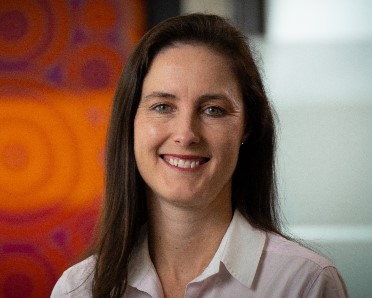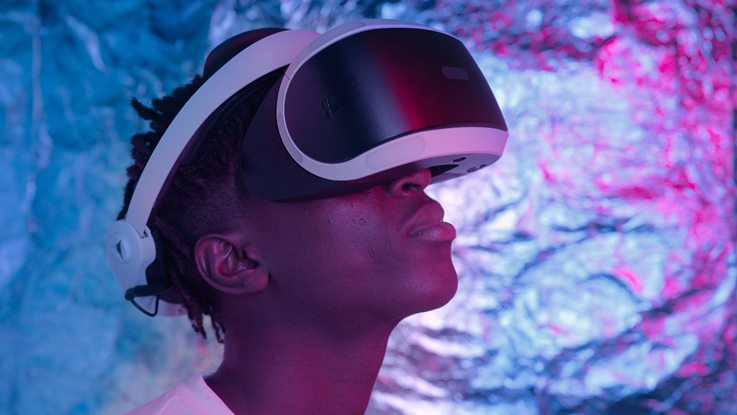SUZANNE O'CALLAGHAN
Suzanne O'Callaghan is HFA Policy Research and Education Manager
Making the most of your health virtually
Chair: Suzanne O'Callaghan
Embracing health care futures: Global trends in consumer health care innovation and where they’re taking us ~ Dr Zaana Howard
Future digital healthcare environment in Australia ~ Bettina McMahon
New experiences with diagnostics and programs in bleeding disorders – Australian case studies ~ Scott Russell, Erin Krake
Panel discussion ~ Erin Krake, Julia Ekert, Janine Furmedge, Sharon Danilovic, Helen Dixon, Neil (patient)
With the conference theme of Embracing a changing world in mind, the session on virtual health took a visionary but pragmatic perspective on the changes in healthcare due to advances in digital technology.

Dr Zaana Howard
Dr Zaana Howard, a leader in customer experience and design, introduced the session with an overview of the trends in digital health care innovation. She noted that the COVID-19 has accelerated some shifts that were already taking place in tools and technologies, such as telehealth. With their experience of being connected to simple, accessible and high-quality big brand digital technology with online streaming services and products like smart watches, consumers now have higher expectations of online health care.
She described three major shifts in health care innovation and delivery:
Virtual health care integrates not only telehealth but use of IoT (internet of things) devices that can transmit personal health data remotely, such as wearables: smart watches and medical sensors are common examples. With increased use of telehealth, the point of care is shifting from where the health care provider is to where the patient is. Artificial intelligence can be used to collate large amounts of health data and predict likely outcomes – and provide alerts to patients to prevent poor outcomes. Some programs are now gamifying wellness programs and offer ‘healthy challenges’ to consumers as an incentive for them to improve their health and wellbeing. She also outlined the use of immersive health experiences in mental health and areas such as surgery, where the user wears a Virtual Reality headset and is immersed within a 3D virtual environment. Where will this lead in the future? Zaana described a new range of innovative health services that provide ‘patient-centred ecosystems’, with end-to-end care that integrates face-to-face with virtual care.

Bettina McMahon
Bettina McMahon, CEO of HealthDirect Australia, followed with an outline of the future healthcare environment in Australia and the Australian Government digital health strategy. With the massive increase in use of digital and smart technology across Australia, an important priority is a seamless delivery of health and wellbeing services to consumers by integrating virtual healthcare with face-to-face health care services – so that for example, a consumer moves from a website, to a phone call, to a face-to-face appointment as a continuous experience. This involves providing consumers with the information and tools they need to make good decisions about their health and to know when to seek help from health professionals. Bettina underlined that it is particularly relevant to people with chronic health conditions such as bleeding disorders.

How does virtual healthcare work in a ‘real world’ environment for people with bleeding disorders?
At the Haemophilia Treatment Centre (HTC) at the Royal Brisbane and Women’s Hospital, the physiotherapists often conduct telephone consultations with their patients as the service is statewide and patients cannot always visit the HTC for physiotherapy appointments. Scott Russell, haemophilia physiotherapist at the Brisbane HTC, presented research results from their study, which compared video conferencing to telephone calls for physiotherapy consultations. With telephone calls, management and referral is often based on verbal descriptions from patients and there were concerns it could lead to sub-optimal management. His study found that:
The HTC team from the Royal Children’s Hospital in Melbourne followed Scott with demonstrations of virtual health in a paediatric environment. Haemophilia nurse Erin Krake showed how she conducted infusion education via telehealth with a young haemophilia patient and his family in country Victoria. Data manager Julia Ekert explained how data from MyABDR, the patient recording app, could be used in a telehealth review.
The question of virtual healthcare into the future continued in the session panel discussion. Erin and Julia were joined by Janine Furmedge, haemophilia nurse from their HTC team, Helen Dixon, haemophilia physiotherapist from New Zealand, Sharon Danilovic, social worker from The Alfred hospital in Melbourne, and Neil, who described himself as a ’58-year-old guy with haemophilia A and HIV’, to give the patient perspective.
For Neil a valuable part of his relationship with his HTC is the continuity of care with his team. As his health has improved, the frequency of his reliance on the HTC has decreased; but his team is very important when there are problems or when liaising with other specialities. Telehealth has been very helpful to manage distance and traffic.
Janine commented that this was similar for paediatric patients – to be able to pick up the phone and get the care they need when they need it; and to have education for themselves and for their child’s school or childcare centre. Although many reviews have been provided via telehealth during the COVID-19 epidemic, there are still occasions when face-to-face consultations are important – especially with new patients, initiating new treatment, or when there are bleeding episodes, or multidisciplinary consultations with a range of specialties.
Helen noted that as a physiotherapist, some things were harder to assess via telehealth. In contrast, Sharon observed that social work clients had appreciated the access to the team via telehealth during the epidemic, the convenience and the opportunities to involve their family members and other professionals, such as a psychiatrist. However, like Scott, she drew attention to the lack of access to good internet technology for some patients.
Discussion moved on to the future. The panel considered the potential for artificial intelligence to work with tools such as MyABDR to prompt patients to connect with their HTC when it detects particular issues, such as unresolved bleeds. Helen also described a study in the UK on the use of ultrasound probes by haemophilia patients in a virtual health environment at home. She was also excited by the possibilities of wearables to share data with an HTC on a patient’s activity; Neil was less excited about being monitored constantly! Virtual technology did not remove the need for a specialist HTC. To work effectively, all of these innovations were dependent on skilled patient education and close collaboration between the patient and the specialist HTC team.
Haemophilia Foundation Australia acknowledges the Traditional Owners and Custodians of Country throughout Australia, the land, waters and community where we walk, live, meet and work. We pay our respects to Elders past and present and extend that respect to all Aboriginal and Torres Strait Islander peoples.
Sign up for the latest news, events and our free National Haemophilia magazine